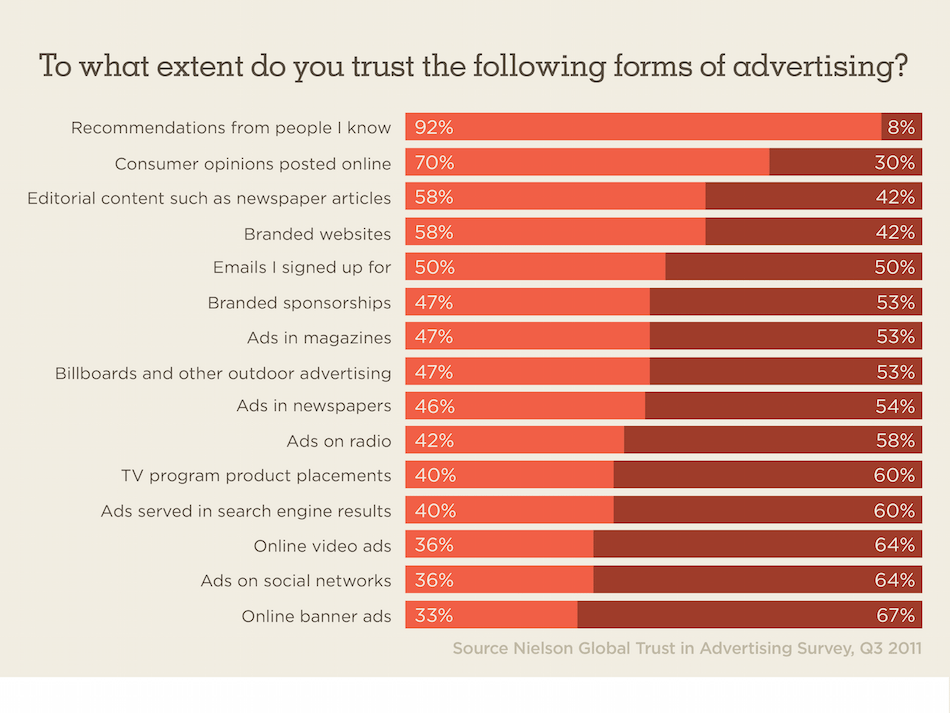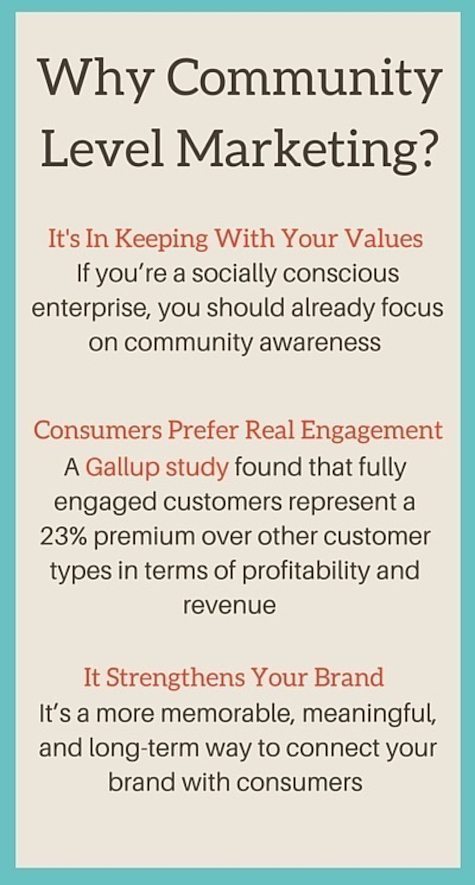Does Your Brand Have Trust Issues? A Path to Recovery
By Polina Pinchevsky | October 12, 2016
These days, most people distrust traditional advertising and are suspicious of paid media. When you throw in the growing purchasing power of millennials who have been shown to generally harbor a keen distrust of basically everyone, the problem is compounded for marketing professionals.
Interestingly, it’s start-ups facing budget and personnel challenges that seem to have the most success overcoming this predicament. They know they can’t spend millions in sustained ad buys, so they get creative with limited marketing budgets to design interesting campaigns targeting narrow audiences.
Many B Corps and other social enterprises also see themselves as challenger brands and as such some have a disdain for traditional advertising. If you’re a marketing director for one these challenger brands and want to stretch your budget, create loyal customers and develop ambassadors for your brand, this post is for you.
Sign Up for Pegable Post to get ideas, advice and resources on activating your mission sent right to your inbox.
You don’t need a huge budget to kick butt
According to a Nielsen study, many of the modern marketers’ go-to tactics do not inspire trust. In fact, consumers trust a stranger’s opinion more than your ad. Really — look at the graphic below:

Big brands might be able to afford more advertising, but the most powerful advertising can’t be bought at all – it has to be grown. If we want people to find a sense of connection and belonging with our brands, the data above makes it clear that we can’t rely on traditional media to get us there. The good news is that as a smaller company, you already have a head start because the larger a company is, the harder it is for the company to connect authentically with its community.
Instead of staring melancholically at your measly marketing budget, be inspired to tap into community level marketing to leverage trust where it already exists to build brand reputation and loyalty. Word of mouth advertising has always been recognized for its efficacy, and community level marketing is the process of nurturing and curating that conversation.
So, what exactly is community level marketing?
 In community level marketing, companies rely on loyal customers to spread their messages, both online and offline. This contrasts with a more traditional model in which companies deliver messages directly to new audiences, often through paid media.
In community level marketing, companies rely on loyal customers to spread their messages, both online and offline. This contrasts with a more traditional model in which companies deliver messages directly to new audiences, often through paid media.
Marketers should think of a community as an intricate framework of relationships between users or advocates who can drive a Purpose into new places and make it more powerful than you ever thought it could be. That seems really appealing in writing, yet in our work we see many organizations that fear investing in real community building.
Often, they’re concerned that they won’t see an immediate uptick in traffic or sign-ups or donations. They’re right – true community level marketing is not about quick results or immediate customer acquisition. It’s about building long-term relationships with your customers and then reaching new people through the communities with which they interact.
Whether the communities are neighborhoods, schools, online groups or social media networks, members make others in the community aware of services or products that align with the community’s values and interests. Activity on this level goes beyond marketing or selling — the product itself builds community cohesion by serving as a common point of interest among members. In doing so, it becomes a symbol of their connection.
Many marketers emphasize digital outreach these days to the extent that they completely ignore opportunities in real-life. While it’s crucial to build your community online, don’t forget that most recommendations happen offline. These conversations take place in the workplace, at sporting events, book clubs, parent groups – anywhere people come together and spend time talking. Word of mouth referrals from members of your community are authentic and effective because friends and other consumers are trusted enough to act as conduits for deeper connections.
The power of these referrals is growing. A Google study found that 85% of Gen C – a powerful force in consumer culture – relies on peer approval for buying decisions. Gen C doesn’t refer to an age group. Instead, it describes people who care deeply about creation, curation, connection and community. It’s an attitude and mindset. By 2020, Gen C is expected to make up 40% of the US population.
Community level marketing is the best way to reach a world full of people looking to their peers because it allows you to bypasses the doubt that traditional advertising channels imbue. By leveraging a source that people already trust, it creates messages that can ring true and hit home.
Let your values be the bridge
One of my favorite quotes is from Simon Sinek: “People don’t buy what you do; they buy why you do it.” As Sinek explains in this brilliant Ted Talk, if you talk about what you believe, you will attract those who believe what you believe. Those who believe what you believe will act as your advocates and brand ambassadors. They can bring the power of their networks and social connections to your cause or product.
This is important because it suggests that you will not build a conversation and community by extolling your company or talking about what you do. Who cares? To attract your brand’s natural allies and transform them into brand advocates, you need to talk about the WHY.
An example of a company that does this well is Plum Organics, a B Corp that makes organic baby food. They have built a large community of committed parents who also believe in Plum’s WHY – to make sure every baby gets a healthy nutritious meal. How do they do it? Take a look at their The Full Effect program.
I encourage you to find your WHY and use community level marketing to connect with others working for the same WHY, using a shared belief system as the glue. It is a very effective way to build trust, grow your brand and expand your customer base. If you’d like to know how to do that, stay posted for my next post on community level marketing.



